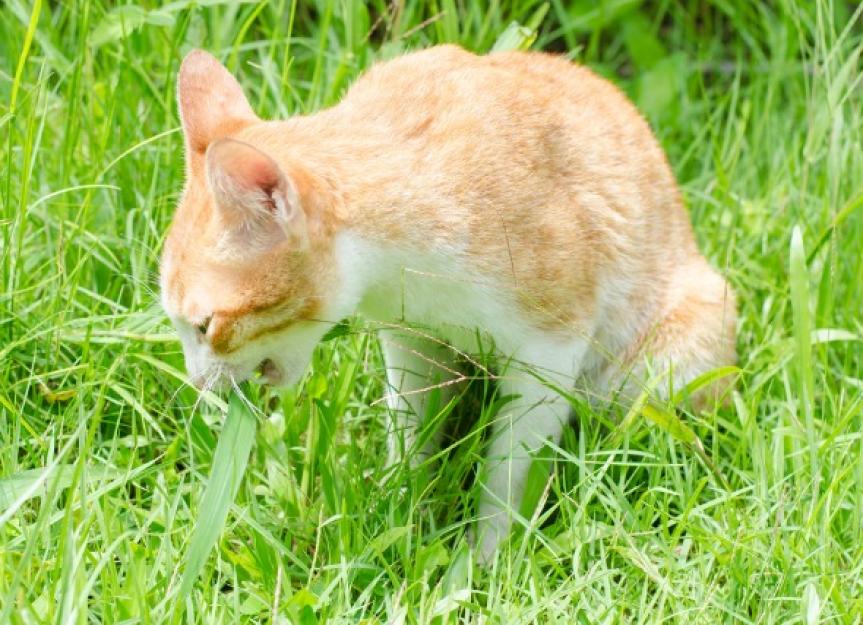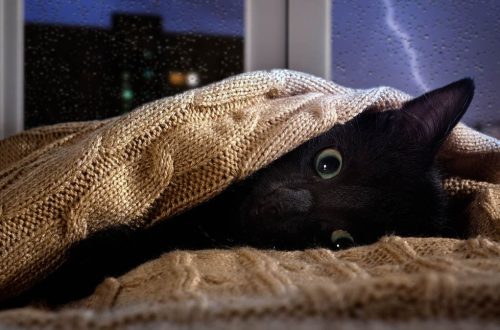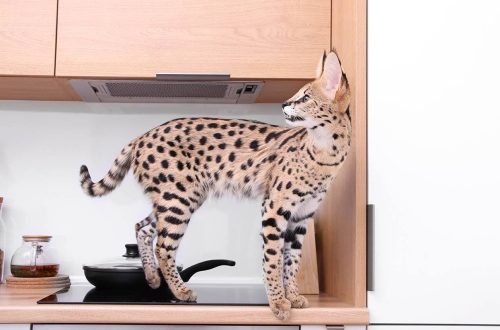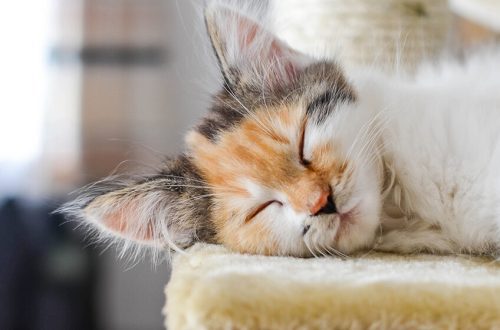
Why does a cat eat grass?
Many owners are wondering: why does a cat eat grass? After all, it would seem that she is a XNUMX% predator! But everything is not as simple as it might seem at first glance.
Contents
Why does a cat eat grass? A little about physiology
Grass-eating by cats is not a whim and caprice of a predator who has decided to temporarily defect to the camp of vegans. This is a physiological need that was formed back in those days when the distant ancestors of our muroks and snow leopards did not cross the threshold of the cave and walked on their own.
The main prey of cats are birds and rodents. But purrs don’t have cooking utensils or the ability to use them, so they can’t separate meat from feathers, wool, bones, and other by-products. The choice is small: either die of hunger, or absorb everything entirely. And the stomach had to find a way out: the cat spits up everything that is superfluous. Times, of course, change. Now we are in the service of cats, and as loving owners we are able to provide those we have tamed with an uninterrupted supply of fillets. But the evolutionary mechanism cannot be turned off so easily. So cats eat grass so that it causes irritation of the gastric tract, and the result is regurgitation. By the way, in this way, cats at the same time get rid of woolen balls accidentally swallowed during licking. There is also a hypothesis that cats eat grass to get additional vitamins and minerals, because they choose mainly young plants that have more nutrients. substances. You may be surprised, but another version says that the cat eats grass to cheer up. Confirmation has not yet been found, but many have noticed that eating mint really pleases our tailed friends. As a rule, the cat herself understands when the moment has come to graze. You can’t punish a cat for unexpectedly burping! This process is out of control. It cannot be stopped, even if the pet makes a titanic effort. It is better not to let the cat into rooms after eating grass, where it can stain furniture, carpets and other things dear to your heart. Wait until she clears her stomach.
What plants can a cat eat?
In the light of the foregoing, this question is natural. After all, the availability of useful plants is a vital necessity for a cat. One option is to take the cat to the dacha and provide freedom of choice. Unless, of course, it is possible to ensure a safe existence for the purr there. Then the cat is more likely to choose rough greens, such as sedge or cereals.
If your cat is limited to apartment maintenance, your task is to regularly replenish stocks of grass or grow it right in the apartment. If this is not done, the pet may encroach on indoor plants, and this is not only offensive to you, but also dangerous for the fluffy – many of them are poisonous. You can plant a special grass that is sold in pet stores. In addition, cats are not indifferent to mint. But the most popular “green food” for cats is oats. Other options are wheat or barley. By the way, the last three types of greens are also useful for people.
Plants poisonous to cats
As a rule, cats are quite picky in food and avoid dangerous plants, however, even dangerous food can become attractive in the absence of fish. So it is your sacred duty to be vigilant. For example, you should not let a cat on the lawn if the grass was treated with fertilizers there. There are also plants that are poisonous in themselves:
- Henbane
- Geranium
- Tree of Life
- Calendula
- Lily of the valley
- Poppy
- Squill
- Daffodils
- Oleander
- Yew
- Tulip
- Violets
- Philodendron
- Cicuta
- Ceramic tile





